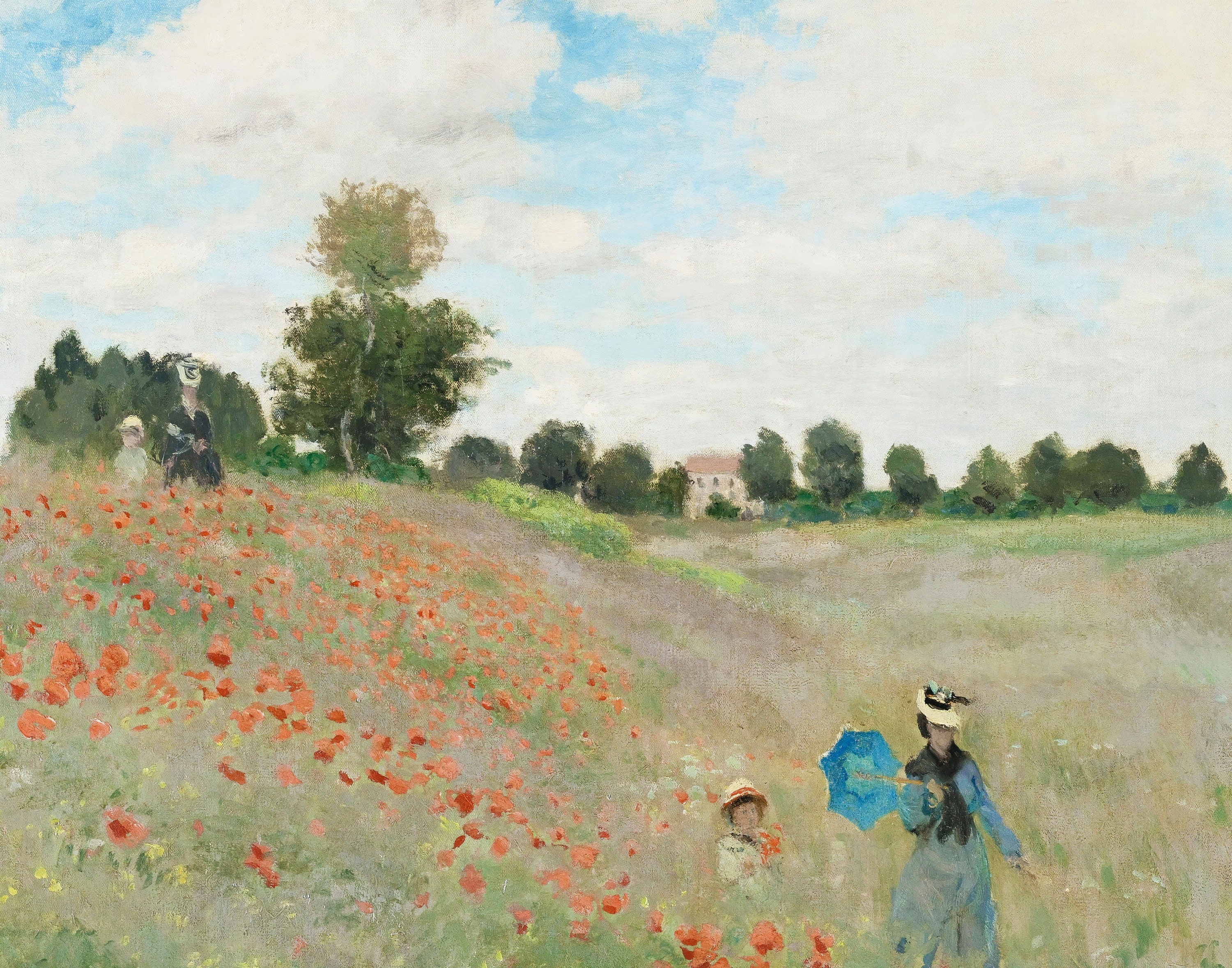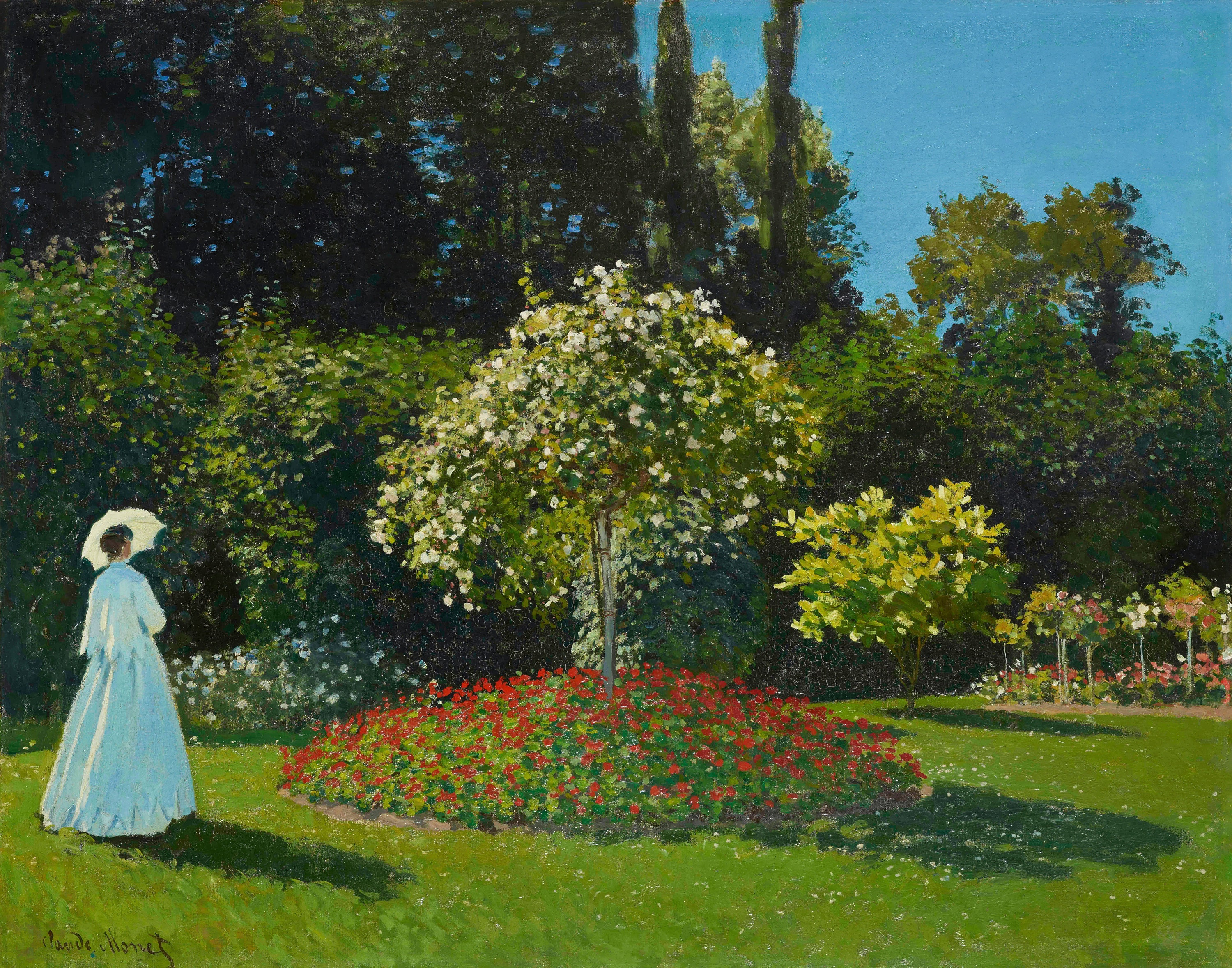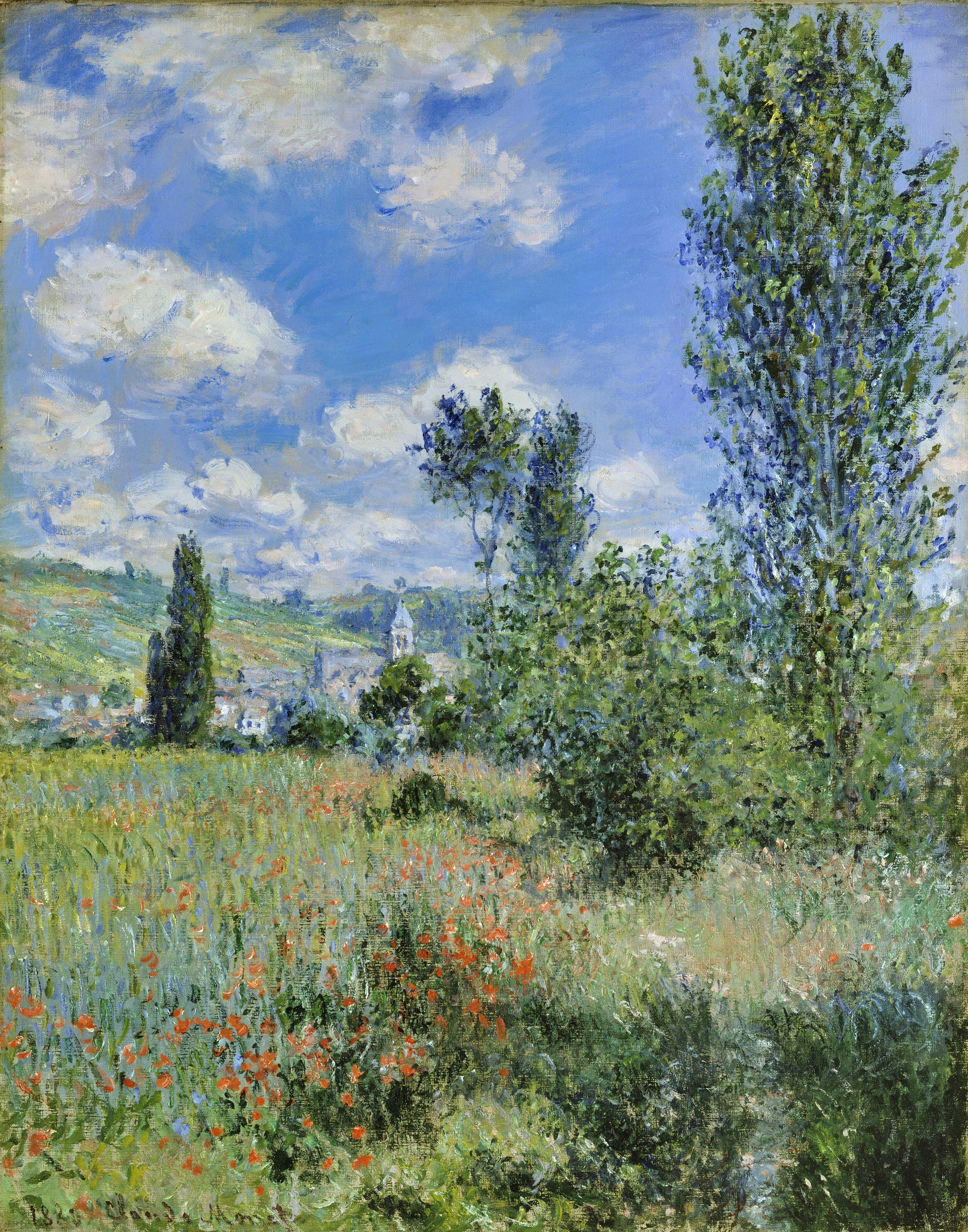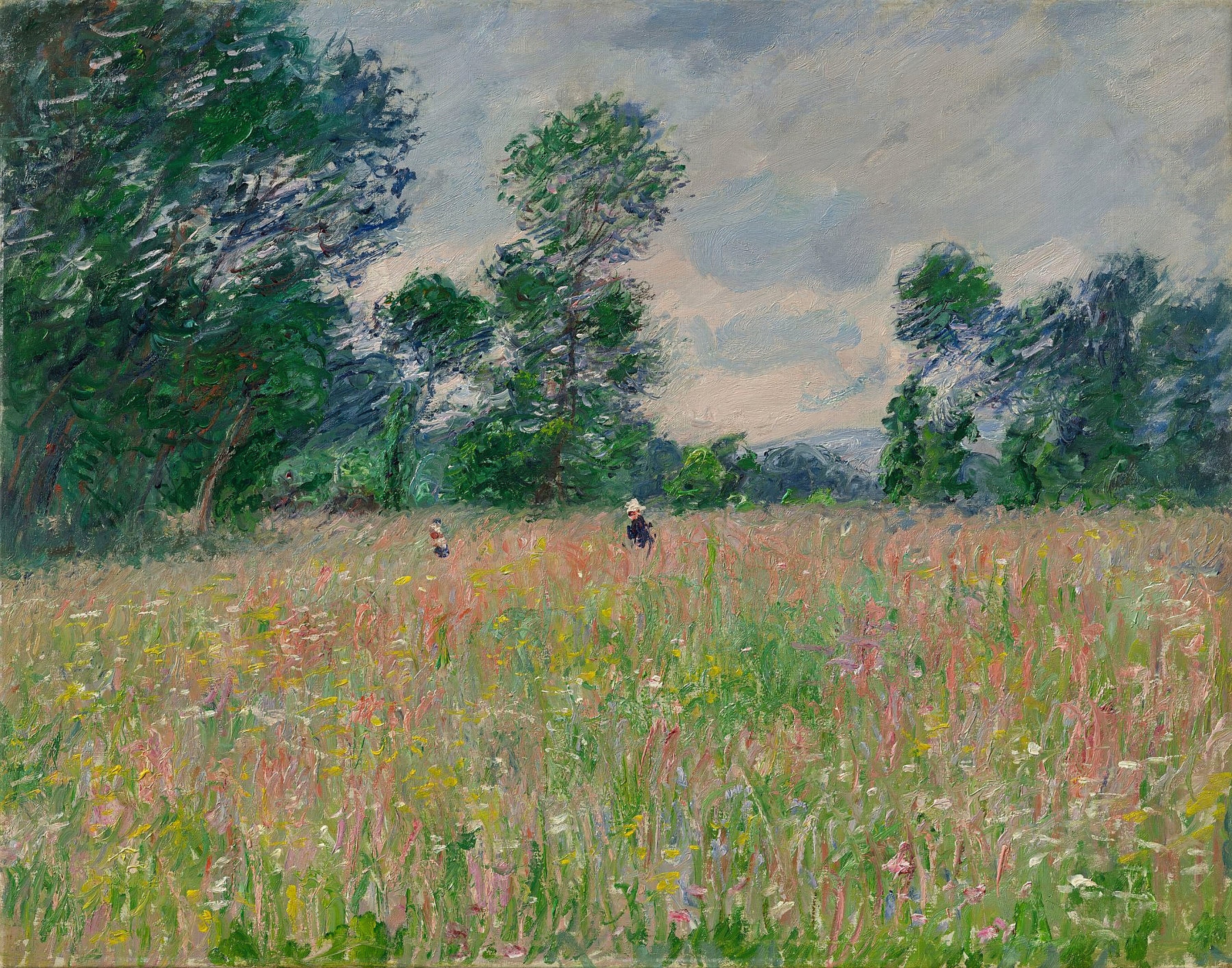Spring is just around the corner, and we can’t wait to see the nature come alive with colors, flowers, and sunshine. Spring is also a great time to enjoy some art, especially the art of Claude Monet, the founder of Impressionism. Monet was a genius of painting landscapes, and he had a special talent for capturing the light, color, and mood of spring. He painted many scenes of spring, from the city to the countryside, from the river to the garden, and he showed his mastery of expressing the freshness and charm of this time of year. In this post, we will explore why Monet is the master of spring art and how he used his technique and vision to create stunning paintings. We will also give you some ideas on how to decorate your home with his artworks and bring some spring joy to your space.
The Parc Monceau (1876)
The Parc Monceau is one of Monet’s early impressionist paintings, and it shows a public park in Paris, where he lived at the time. Monet painted this scene several times, from different perspectives and at different times of the day, to show the variations of light and color. In this version, he chose a sunny morning in spring, when the park is full of people enjoying the warm weather and the blooming flowers. Monet used short and quick brushstrokes to create a sense of movement and spontaneity, and he applied bright and pure colors directly on the canvas, without mixing them. He also used complementary colors, such as blue and orange, to create contrast and vibrancy. The result is a lively and cheerful painting that captures the essence of spring in the city.
Champ de coquelicots (Poppy Field) (1881)

Champ de coquelicots (Poppy Field) is one of Monet’s most famous and beloved paintings, and it depicts a rural scene near Argenteuil, where he moved with his family in 1871. Monet painted this scene with his wife Camille and his son Jean as the main figures, walking along a path in a field of poppies. Monet used a high horizon line to emphasize the vastness and depth of the landscape, and he contrasted the warm colors of the flowers and the grass with the cool colors of the sky and the distant hills. He also used small and loose brushstrokes to create a sense of texture and movement, and he blended the colors to create a soft and hazy atmosphere. The result is a charming and idyllic painting that evokes the joy and harmony of spring in the countryside.
Lady in the Garden (1867)

Lady in the Garden is one of Monet’s early paintings, and it shows his wife Camille sitting in a garden in Sainte-Adresse, where he spent the summer of 1867. Monet painted this scene with a large canvas and a lot of detail, and he used a palette of green, white, and yellow to create a harmonious and natural effect. He also used light and shadow to create contrast and depth, and he painted the flowers and the leaves with delicate and precise strokes. The result is a graceful and elegant painting that reflects the beauty and tranquility of spring in the garden.
View of Vetheuil (1880)

View of Vétheuil is one of Monet’s paintings from the series of Vétheuil, a village where he lived for a few years after the death of his wife. Monet painted this scene from his house, overlooking the Seine river and the village. Monet used a low horizon line to emphasize the sky and the water, and he used a range of colors to create a dynamic and expressive effect. He also used thick and bold brushstrokes to create a sense of movement and energy, and he painted the reflections of the clouds and the trees on the water. The result is a powerful and dramatic painting that conveys the mood and the atmosphere of spring by the river.
The Flowering Meadow (1885)

The Flowering Meadow is one of Monet’s paintings from the series of Giverny, a village where he moved in 1883 and created his famous water lily pond. Monet painted this scene from a hill overlooking his garden, which he filled with various flowers and plants. Monet used a bright and colorful palette to create a vibrant and joyful effect, and he used long and curved brushstrokes to create a sense of rhythm and flow. He also used a blurred and impressionistic technique to create a dreamy and poetic atmosphere. The result is a beautiful and enchanting painting that celebrates the splendor and diversity of spring in nature.
As you can see, Monet was a master of spring art, and he used his impressionist style to capture the light, color, and mood of this season. He painted many scenes of spring, from the city to the countryside, from the river to the garden, and he showed his skill and vision in creating stunning paintings. His artworks are not only a delight for the eyes, but also a source of inspiration and happiness for the soul.
If you love Monet and his spring paintings, you have many options to decorate your home with his artworks and bring some spring joy to your space. One of them is to use printable art, which is a digital file that you download and print yourself, either at home or by using a professional printing service. It’s an easy, local, and inexpensive way to get high-quality artwork for less money than a physical art print, and sometimes you can even download prints for free. You can find prints, posters, and canvas of his paintings online or in local art stores. Another option is to use a Frame TV, which is a smart TV with a matte display that lets you enjoy art in your home.
You can also create your own spring art, using Monet as a guide and using your own creativity and imagination. You can use eco-friendly and sustainable materials, such as recycled paper, cardboard, or wood, and paint with natural or organic colors. You can also use flowers, leaves, or other elements from nature to create your own collage or mosaic. The possibilities are endless, and you can have fun and express yourself with your spring art.
I hope you enjoyed this post and learned something new about Monet and his spring paintings.
Thank you for reading and have a wonderful spring season! 🌸

